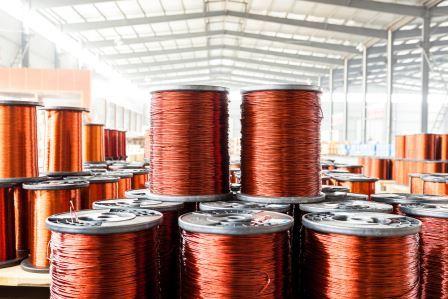How copper prices are getting affected by complex interplay of supply and demand
Weaker-than-expected demand for copper form China dampened the sentiment for the base metals. Copper, the widely used industrial metal is trading down by more than 8 percent so far this month in key London Metal Exchange and domestic futures platforms. A similar trend was witnessed in the China Shanghai futures as well.
Copper prices were on a bullish trajectory in the first quarter of the year on hopes that China’s property market would recover following the pandemic-induced slowdowns. However, a string of recent disappointing economic releases from the country pointed to a weak demand outlook that has battered the price of the metal in the past few weeks.
Though the latest industrial output data from China showed a growth of 5.6 percent in April when compared to a year earlier, it still missed expectations by a large margin. Additionally, retail sales numbers also came in lower than expected at 18.4 percent against a forecast of a 21 percent increase.
As consumer prices barely grew in April, a cooling of demand is clearly visible in the country. The inflation rate of 0.1 percent year-on-year growth in April was also the slowest since 2021. In addition, due to a global downturn, imports and exports have slowed down in the same period.
China’s exports increased by 14.8% yearly in March but dropped to 8.5 % in April. In the meantime, imports fell by 1.4% in March, and the decline in imports grew to 7.6% in April.
Copper is the third most widely used industrial metal worldwide and China is the largest consumer of the metal accounting for more than 50% of the global consumption. It is an essential commodity in industries like electronics, appliances, electrical grids, vehicles, and renewable energy technologies. Hence, the demand for this metal is traditionally considered a leading indicator of global economic health.
The aggressive policy measures of the US Federal Reserve have also dampened business moods across the world. A contraction in business activities lowered the prospects of the metal.
Resilience in the US dollar pounded the price of commodities. The greenback strengthened in the recent sessions, as markets bet that the US interest rates are likely to remain higher for a long period. The US dollar index has corrected by more than 12 percent since September last year when it hit a twenty-year high.
The US greenback is the benchmark pricing mechanism for all international commodities. Hence, when the dollar appreciates, the price of commodities measured in other currencies rises. This causes an increase in raw materials that eventually leads to a decline in demand.
At the same time, the global copper supply has seen moderate growth in recent years, driven by increased mining activities and the exploration of new projects. However, the overall growth rate has been hindered by declining ore grades, environmental challenges, and limited investment in new mining projects.
Looking ahead, the global copper market continues to be influenced by a complex interplay of factors affecting both supply and demand. While supply faces challenges related to mining production and environmental constraints, demand is projected to grow steadily which is largely driven by economic growth, technological advancements, and sustainability initiatives. Technological innovation and the transition to a low-carbon economy are likely to fuel long-term demand.
First published in Economic Times.

No comments:
Post a Comment